Bodywork repair kit

Plastic body repair kit
-
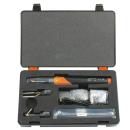 150.1010Repair kit for plastic partsOn rechargeable battery
150.1010Repair kit for plastic partsOn rechargeable battery -
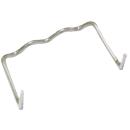 150.1061Repair clipU-bend
150.1061Repair clipU-bend -
 150.10xxRepair clipper 100 pieces
150.10xxRepair clipper 100 pieces -
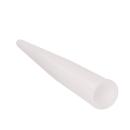 5135.0001Standar replacement NozzleFor ref 5100-5120-5150
5135.0001Standar replacement NozzleFor ref 5100-5120-5150 -
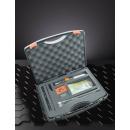 5600.1000Repair kitplastic
5600.1000Repair kitplastic -
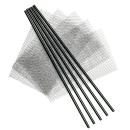 5600.1001Plastic rodABS - bag of 5
5600.1001Plastic rodABS - bag of 5 -
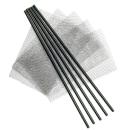 5600.1002Plastic rodPP - bag of 5
5600.1002Plastic rodPP - bag of 5 -
 5600.1003Wire nettingbag of 5
5600.1003Wire nettingbag of 5 -
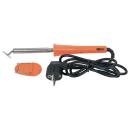 960.1120Soldering iron forplastic material
960.1120Soldering iron forplastic material -
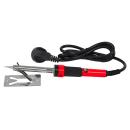 960.1130Soldering iron with holder60 Watt
960.1130Soldering iron with holder60 Watt -
 AgrafesPRT4CR
AgrafesPRT4CR
︾
The benefits of plastic repair kits for bodywork :
Plastic repair kits have become essential tools for car repair professionals looking to restore damaged plastic parts. These kits offer a practical and economical alternative to replacing plastic components entirely, providing a number of significant benefits.
Financial savings:
One of the main benefits of plastic repair kits is their ability to avoid the high costs associated with the complete replacement of plastic parts. By repairing rather than replacing, users save on the cost of spare parts and labour.
Versatility of use:
Plastic repair kits are versatile and can be used to restore a variety of plastic parts, including bumpers, tail lights, mirrors, grilles and other body components. This provides a comprehensive solution for a variety of automotive repairs.
Easy to use:
These kits are generally designed to be user-friendly, even for those without extensive car repair experience. The included instructions and ease of application make these kits an accessible option for many DIYers.
Saves time:
Plastic repairs can often be carried out more quickly than replacing a complete part. Users save time by avoiding the delays associated with ordering replacement parts and installing new ones.
Reduced waste:
By repairing rather than replacing, plastic repair kits help to reduce waste. This has a positive impact on the environment by limiting the amount of plastic disposed of in landfill sites.
Satisfactory aesthetic results:
When used correctly, plastic repair kits can provide satisfactory aesthetic results. Repairs are often well integrated, minimising visible traces of previous damage.
Adaptability to various types of plastic:
Some plastic repair kits are formulated to work with different types of plastic, offering a suitable solution for a variety of plastic surfaces and components.
Durability:
Repairs made using plastic repair kits can be durable, offering a long-term solution when the kit instructions are followed correctly. This avoids the need for frequent repairs.
In short, plastic repair kits offer a cost-effective, accessible and environmentally-friendly alternative for restoring damaged plastic parts. Whether for cosmetic or functional repairs, these kits enable amateurs and professionals alike to extend the life of plastic parts effectively.
Our plastic tools for professional repairs to car and motorbike bodywork:
Plastic repair has become a common and effective method of restoring damaged plastic components on motor vehicles. Some of the essential tools used in the plastic repair process include the plastic welding staple, the plastic welding rod and the bodywork soldering iron. These tools offer valuable solutions for restoring plastic parts and avoiding the costly replacement of entire components.
Plastic welding clips:
Plastic welding staples, also known as repair staples, are key elements in the plastic repair process. These staples are usually made of plastic and are designed to be fused to the damaged plastic part using a specific soldering iron. They play a crucial role in securing and reinforcing damaged areas, helping to restore the structure and integrity of the part.
Plastic welding rod:
Plastic welding rods, also known as welding sticks, are filler materials used in plastic repair. These rods are often made from plastics that are compatible with the material of the part being repaired. When heated with a bodywork soldering iron, they melt to fill cracks, holes or damaged areas, ensuring a strong, even repair.
Bodywork soldering iron :
The bodywork soldering iron is a tool specially designed for plastic repairs. It has a heated tip that melts plastic welding staples and rods. Some bodywork soldering irons are temperature-adjustable to suit different types of plastic. They offer the precision and control needed to carry out plastic repairs without further damaging the part.
In plastic repair, the process often begins by preparing the damaged area, followed by the use of the plastic welding clip to fix and stabilise the area. Next, the plastic welding rod is heated using the bodywork soldering iron, filling in the gaps and restoring the original surface of the part.
The judicious use of these plastic repair tools results in strong, durable repairs, reducing the need to replace expensive components while preserving the aesthetics and functionality of plastic vehicle parts.
Find out all about plastic repair kits:
Plastic repairs to bodywork, using dedicated kits, are attracting a great deal of interest on the internet. Users, from DIY enthusiasts to automotive professionals, frequently ask questions to help them better understand the use of these kits and their benefits. Here are some of the most frequently asked questions on the internet about plastic body repair kits:
1. How does a plastic body repair kit work?
Users are looking to understand the overall repair process, from applying the staples to using the soldering iron to fuse the kit components together.
2. What types of damage can be repaired with a plastic repair kit?
Users want to know the range of applications for the kits, including whether they can treat cracks, holes, scratches or other types of damage.
3. Are plastic repair kits suitable for all types of plastic?
The compatibility of kits with different types of plastic is a common concern. Users want to know if these kits are suitable for a variety of plastic materials.
4. Can a plastic repair kit be used on large parts?
Some users question whether the kits are suitable for repairs to larger body components, such as bumpers or side panels.
5. What are the advantages of plastic repair compared with parts replacement?
Internet users are looking for information on the economic, ecological and aesthetic advantages of plastic repair compared with complete parts replacement.
6. Are plastic repairs durable over time?
The durability of repairs carried out with kits is a concern. Users want to know whether the repairs will stand up to environmental conditions and driving constraints over time.
7. Where can I buy a quality plastic repair kit?
The search for reliable sources for the purchase of plastic repair kits is frequent. Users ask for recommendations for quality products and reputable suppliers.
8. How do I remove paint residue around areas repaired with a plastic repair kit?
Some users ask how to prepare the surface before the repair and how to remove paint residues after the kit has been used.
9. Are plastic repair kits suitable for car repair beginners?
Novices want to know whether the kits can be used without any previous car repair experience, and whether they can achieve satisfactory results.
Answering these questions online provides users with useful information on how to get the most out of plastic repair kits, helping them to make informed decisions when restoring plastic components to their vehicles.